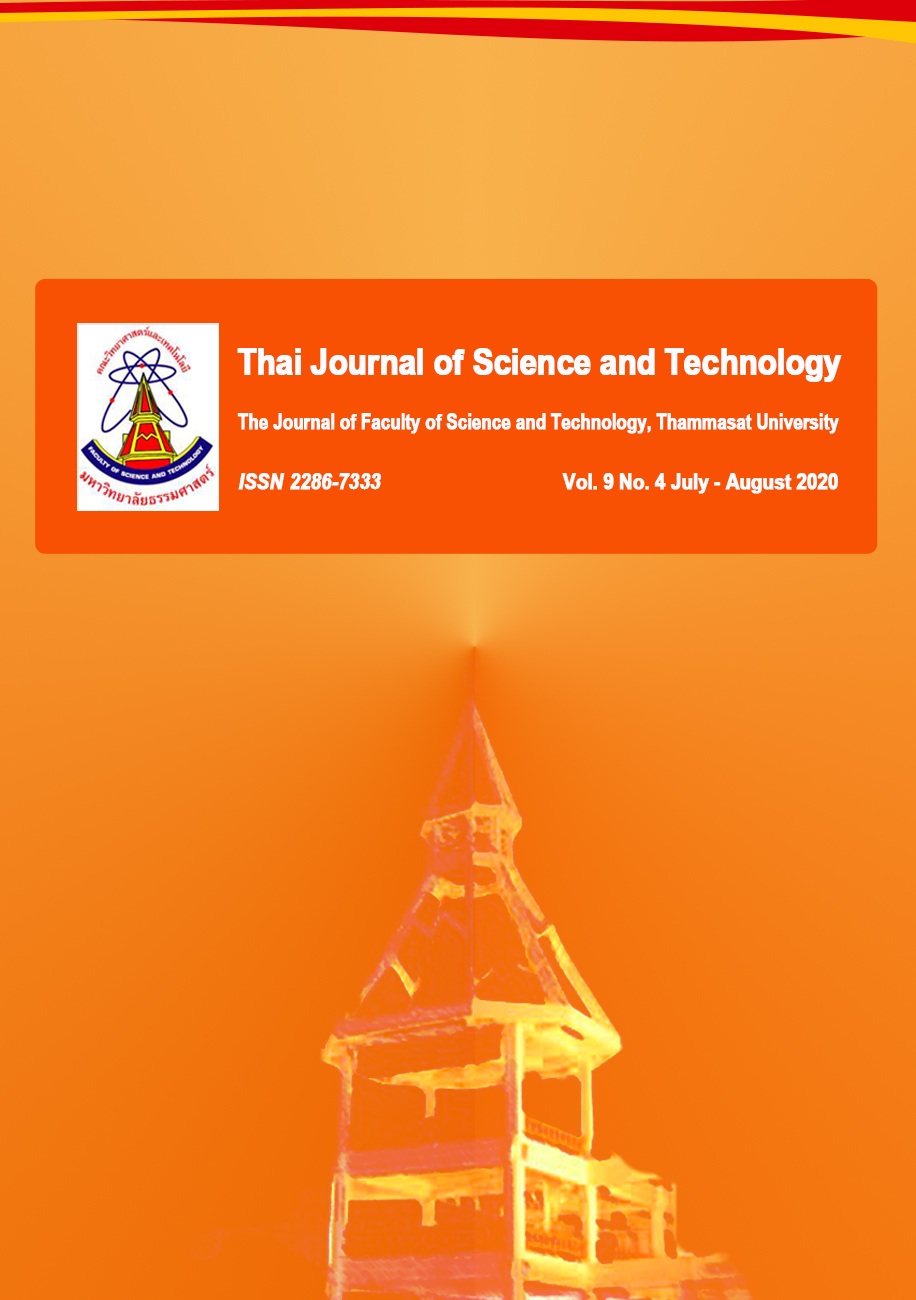การคัดเลือกสายต้นไผ่ซางหม่นที่มีศักยภาพในการผลิตชีวมวล
Main Article Content
Abstract
The purpose of this study was to select bamboo (Dendrocalamus sericeus Munro) clones, which have a potential for biomass production. The top ten with three-year-old bamboo clones were selected from 211 clones, based on physical properties. The selected bamboo clones included the clones number 44, 53, 71, 83, 89, 101, 106, 120, 206 and 211.The selected bamboo clones were brought to the carbonization process (at a temperature of 500 °C with 1 hour holding time), then ground into charcoal powders, followed by analyses of chemical properties, heat value and ash content. Other parts of dried bamboo were measured for moisture content. The results indicated that various bamboo clones showed significant differences of heat values and ash contents. However, their moisture contents have no significant difference. The bamboo clone number 44 gave the highest heat value (6,963.7 cal/g), with no significance with that of the clone number 120 (6,957.6 cal/g). Moreover, the bamboo clone number 120 has the lowest ash content (2.04%). Therefore, the bamboo clone number 120 has a high potential as a material to produce biomass.
Article Details
บทความที่ได้รับการตีพิมพ์เป็นลิขสิทธิ์ของคณะวิทยาศาสตร์และเทคโนโลยี มหาวิทยาลัยธรรมศาสตร์ ข้อความที่ปรากฏในแต่ละเรื่องของวารสารเล่มนี้เป็นเพียงความเห็นส่วนตัวของผู้เขียน ไม่มีความเกี่ยวข้องกับคณะวิทยาศาสตร์และเทคโนโลยี หรือคณาจารย์ท่านอื่นในมหาวิทยาลัยธรรมศาสตร์ ผู้เขียนต้องยืนยันว่าความรับผิดชอบต่อทุกข้อความที่นำเสนอไว้ในบทความของตน หากมีข้อผิดพลาดหรือความไม่ถูกต้องใด ๆ
References
เกรียงไกร รักมิตร, 2543, ไผ่, บ้านจอมยุทธ, แหล่งที่มา : https://www.baanjomyut.com/library_2/extension-2/bamboo/02.html, 1 มิถุนายน 2562.
ธัญพิสิษฐ์ พวงจิก, 2558, เม็ดเชื้อเพลิงจากไผ่ : พลังงานทดแทนมูลค่ามหาศาล?, ว.วิทยาศาสตร์และเทคโนโลยี 23(1): 35-42.
ไพรวรรณ เล็กอุทัย, มยุรี จิตต์แก้ว และอรุณี วีนิน, 2547, การป้องกันรักษาไม้ไผ่. หจก.อักษรสยามการพิมพ์, กรุงเทพฯ, 39 น.
สิริณ บุนนาค, 2561, คุณภาพด้านพลังงานของไม้ไผ่กิมซุงที่อายุต่างกัน, ปัญหาพิเศษปริญญาตรี, มหาวิทยาลัยธรรมศาสตร์, ปทุมธานี.
สำนักงานมาตรฐานผลิตภัณฑ์อุตสาหกรรม, 2547, มาตรฐานผลิตภัณฑ์ชุมชน : ถ่านไม้หุงต้ม, แหล่งที่มา : https://www.tisi.go.th, 16 พฤษ ภาคม 2561.
สุทัศน์ เดชวิสิทธิ์, 2537, ไม้ไผ่สำหรับคนรักไผ่, สำนักพิมพ์ อโกรคอมมิวนิคก้า, กรุงเทพฯ, 200 น.
American Society of Testing and Materials, 2004, Standard Test Method for Ash in the Analysis Sample of Coal and Coke from Coal, ASTM D 3174-002.
American Society of Testing and Materials, 2010, Standard Test Method for Gross Calorific of Coal and Coke1, ASTM D 5865-10a.
Association of Official Analytical Chemists, 2000, Official Method of Analysis of AOAC International, 17th Ed., The Association of Official Analytical Chemists, Gaithersburg, MD.
Ohrnberger, D., 1999, The Bamboos of the World, Elsevier Science B.V., Amsterdam, 596 p.

